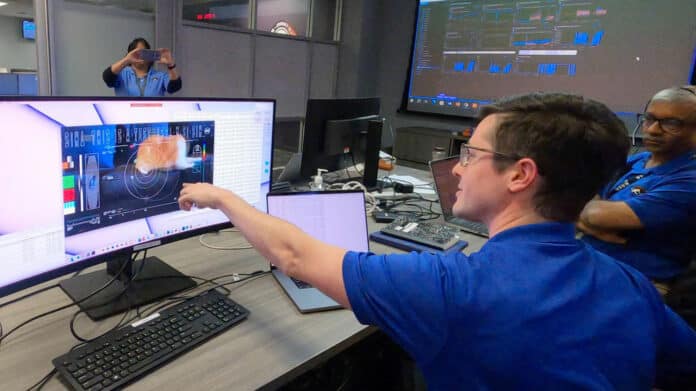NASA’s Deep Space Optical Communications experiment beamed an ultra-high definition streaming video featuring a cat named Taters from a record-setting 19 million miles (31 million kilometers) away – some 80 times the distance from Earth to the Moon. The milestone is part of a NASA technology demonstration aimed at streaming very high-bandwidth video and other data from deep space – enabling future human missions beyond Earth orbit.
The experiment took place aboard NASA’s Psyche spacecraft, which is currently on its way towards 16 Psyche, a metal asteroid located in the main belt between Mars and Jupiter. The spacecraft was launched aboard a SpaceX Falcon Heavy rocket in October 2023.
“This accomplishment underscores our commitment to advancing optical communications as a key element to meeting our future data transmission needs,” said NASA Deputy Administrator Pam Melroy. “Increasing our bandwidth is essential to achieving our future exploration and science goals, and we look forward to the continued advancement of this technology and the transformation of how we communicate during future interplanetary missions.”
The 15-second test video of Taters was beamed using a cutting-edge instrument called a flight laser transceiver. The instrument beamed an encoded near-infrared laser to the Hale Telescope at Caltech’s Palomar Observatory in San Diego County, California.
The video signal took 101 seconds to reach Earth while transmitting at a speed of 267 megabits per second (Mbps). It was then downloaded and sent “live” to NASA’s Jet Propulsion Laboratory in Southern California, where it was played in real-time for analysis.
“Despite transmitting from millions of miles away, it was able to send the video faster than most broadband internet connections,” said Ryan Rogalin, the project’s receiver electronics lead at JPL. “In fact, after receiving the video at Palomar, it was sent to JPL over the internet, and that connection was slower than the signal coming from deep space. JPL’s DesignLab did an amazing job helping us showcase this technology – everyone loves Taters.”
The laser communications demo is designed to transmit data from deep space at rates 10 to 100 times greater than the state-of-the-art radio frequency systems used by deep space missions today. The flight laser transceiver instrument conducted its initial “first light” test in November, where it successfully sent a signal to Earth from 10 million miles (16 million km) away. While most of the signals sent during testing were random packets of information, JPL scientists decided to add a fun element to this milestone demonstration.
“One of the goals is to demonstrate the ability to transmit broadband video across millions of miles. Nothing on Psyche generates video data, so we usually send packets of randomly generated test data,” said Bill Klipstein, the tech demo’s project manager at JPL, in a statement. “But to make this significant event more memorable, we decided to work with designers at JPL to create a fun video, which captures the essence of the demo as part of the Psyche mission.”
The Psyche spacecraft is currently on its way toward a fly-by of Mars in 2026, during which time it will take some new images of the Red Planet. After that, Psyche will continue its journey to the asteroid belt, where it will arrive at 16 Psyche in 2029 and begin its scientific observations.
